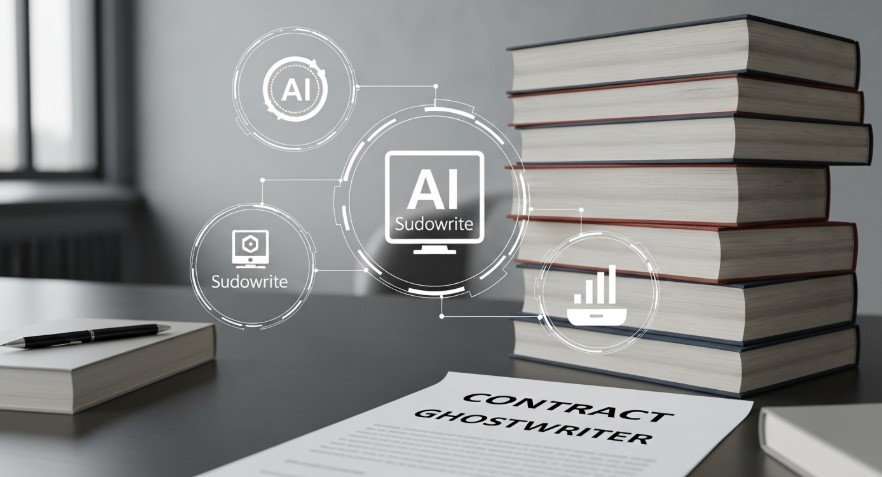Writing a book is a dream for many, but it can feel like a huge task. With AI tools like ChatGPT gaining popularity, many writers wonder: Can you use ChatGPT to write a book? This guide explores what ChatGPT can do, its limits, and how to use it effectively for book writing. It also covers legal and ethical issues and suggests other options. Whether you’re new to writing or a pro, this article will help you decide if ChatGPT is right for your book project.
What is ChatGPT?
ChatGPT is an AI tool created by OpenAI. It uses natural language processing (NLP) to understand and create human-like text. You can ask it questions or give it tasks, and it responds conversationally. Launched in November 2022, ChatGPT is used for brainstorming, research, and drafting. While not built just for book writing, it’s a helpful tool for writers.
How ChatGPT Works
ChatGPT takes your input, called a prompt, and generates text based on patterns from its training data. Clear prompts give better results. For example, “Write a 500-word mystery chapter” works better than “Write something cool.” The quality depends on how specific you are.
ChatGPT Models and Costs
ChatGPT offers different models:
- GPT-4o mini: Free, good for basic tasks.
- GPT-4o: Advanced, with limited free access or paid plans.
- o1 and o1-mini: Focus on reasoning, less ideal for creative writing.
- o3-mini: Good for logic, not great for stories.
Pricing includes:
- Free Plan: Limited access to GPT-4o mini.
- ChatGPT Plus: $20/month for more features and GPT-4o access.
- ChatGPT Pro: $200/month for heavy users, rarely needed for writers.
For book writing, the Plus plan is often enough.

Can ChatGPT Write a Book?
ChatGPT can help write a book but can’t create a polished, complete book alone. It’s great for brainstorming, outlining, and drafting but needs human editing for quality. Here’s what it can and can’t do:
Benefits of Using ChatGPT
- Fast Drafting: Creates text quickly, saving time.
- Idea Generation: Suggests plots, characters, or titles.
- Research Help: Summarizes info for nonfiction or worldbuilding.
- Writer’s Block Fix: Offers prompts to keep you moving.
Drawbacks of Using ChatGPT
- Limited Originality: Relies on existing data, not new ideas.
- Errors: Can produce wrong facts (e.g., a 2023 study found a 27% error rate in some AI outputs).
- Bland Text: Often repetitive or lacks a unique voice.
- Legal Risks: Possible copyright issues with generated content.
Best Use Cases
ChatGPT works well for short tasks like chapter drafts or summaries. For a full book, it’s a starting point, not the final product. Human editing is key for a compelling story or nonfiction work.
| Task | ChatGPT’s Role | Human’s Role |
|---|---|---|
| Brainstorming | Suggests ideas | Picks and refines ideas |
| Outlining | Creates structure | Ensures story flow |
| Drafting | Writes initial text | Edits for style and accuracy |
| Editing | Suggests rephrasings | Adds unique voice |
How to Use ChatGPT for Writing a Book
Here’s a step-by-step guide to using ChatGPT for your book. Each step includes sample prompts for better results.
Step 1: Brainstorm Ideas
Ask ChatGPT for book concepts, genres, or titles.
- Prompt: “Give me 10 book title ideas about [topic].”
- Example: “Give me 10 book title ideas about time travel.”
- Tip: Specify your audience, like “young adult” or “sci-fi fans.”
Step 2: Build an Outline
Create a book structure with chapters or sections.
- Prompt: “Create an outline for a book titled ‘[Book Title]’ with [number] chapters.”
- Example: “Create an outline for a book titled ‘The Time Traveler’s Quest’ with 8 chapters.”
- Tip: Mention key themes or plot points for a tailored outline.
Step 3: Develop Characters
Craft detailed characters for your story.
- Prompt: “Describe a main character for a [genre] book, including background and personality.”
- Example: “Describe a main character for a fantasy book, including background and personality.”
- Tip: Ask for specific traits, like “a brave but flawed hero.”
Step 4: Write Drafts
Generate rough drafts for chapters or sections.
- Prompt: “Write a 500-word chapter for ‘[Book Title]’ based on this outline: [outline].”
- Example: “Write a 500-word chapter for ‘The Time Traveler’s Quest’ based on this outline: Chapter 1 – The protagonist discovers a mysterious device.”
- Tip: Break long drafts into smaller prompts for better focus.
Step 5: Edit and Refine
Use ChatGPT to improve drafts or check consistency.
- Prompt: “Rephrase this paragraph to be more vivid: [paragraph].” or “Does this chapter fit the plot? [chapter summary].”
- Example: “Rephrase this paragraph to be more vivid: The hero walked into the dark forest.”
- Tip: Review AI suggestions to keep your voice unique.
Tips for Success
- Be Clear: Detailed prompts get better results.
- Refine Often: Generate, review, and tweak multiple times.
- Check Facts: Verify nonfiction content for accuracy.
- Add Your Touch: Use ChatGPT as a helper, not the final writer.

Limits of ChatGPT for Book Writing
ChatGPT has notable weaknesses:
- No True Creativity: It remixes existing data, not inventing new ideas.
- Factual Errors: May produce wrong or made-up info (AI hallucinations).
- Weak Context: Misses story nuances or your intended tone.
- Repetitive Text: Can sound dull or repeat phrases.
- Not for Long Works: Struggles with coherence in full books.
A 2023 X post noted ChatGPT’s story continuation went off-track, creating an unrelated plot spanning centuries. This shows its struggle with long narratives.
Legal and Ethical Issues
Using ChatGPT to write a book is legal, but there are concerns:
- Copyright Risks: ChatGPT’s training data may include copyrighted material, risking infringement. Lawsuits in 2023 by authors like Sarah Silverman against OpenAI highlight this issue.
- Transparency: The Authors Guild suggests disclosing AI use in published books. Some platforms, like Amazon, may require this.
- Evolving Laws: As of July 2025, AI content laws are unclear. Stay updated on copyright rules.
To stay safe, avoid using copyrighted prompts and check with a legal expert before publishing. Learn more at the Authors Guild AI Best Practices.
Alternatives to ChatGPT
If ChatGPT isn’t ideal, try these options:
- Ghostwriters: Professionals create custom, high-quality content. Check The Ghostwriting Agency.
- Specialized AI Tools: Sudowrite.com and Novelcrafter are built for writers, with features for plot and style.
- Traditional Writing: Use tools like Microsoft Word or Scrivener for full control, though it’s slower.
| Option | Pros | Cons |
|---|---|---|
| Ghostwriters | High-quality, human work | Costly, takes time |
| AI Tools | Built for writing, story-focused | May need subscriptions |
| Traditional Writing | Full control | More effort, slower |
Conclusion
ChatGPT is a helpful tool for brainstorming, outlining, and drafting parts of a book. But it can’t match human creativity or produce a finished book without editing. Its limits, like repetitive text and legal risks, make it a writing assistant, not an author. Pair it with human effort or try alternatives like ghostwriters or specialized AI tools for better results. Stay aware of legal and ethical rules to keep your work original and compliant.
